
The post The Most Massive Fish Swimming in the Ocean Today appeared first on A-Z Animals.
Some of the world’s most massive fish species are true giants of the aquatic realm, astonishing both scientists and anglers alike. The whale shark (Rhincodon typus), the largest living fish, can reach lengths of over 40 feet and weigh more than 20 tons, yet it’s a gentle filter-feeder. Close behind is the basking shark, another plankton-eater that can grow past 30 feet. In freshwater, the beluga sturgeon of the Caspian and Black Seas can exceed 20 feet and weigh over a ton, while the Mekong giant catfish and arapaima of the Amazon are record-breakers in their rivers. These species, many endangered, remind us how immense and diverse Earth’s fish life is. Conservation is crucial to ensure these aquatic giants don’t vanish from our waters. Here, we have compiled a list of the largest fish alive today.
Incredible Fish Facts

©Vladislav Gajic/Shutterstock.com
There are more than 34,000 identified species of fish that live in nearly every underwater habitat. About the only place you won’t find fish is the deepest depths of the ocean, as no fish have been discovered at lower than 8,400 meters.
Incredible Fish Facts (Cont.)

©Wonderful Nature/Shutterstock.com
A 2009 report published in Science estimated the biomass of fish at between 800 to 2,000 million tonnes. For perspective, that’s between 2 to 5 times the biomass of all humans on Earth! However, a more recent study from CSIC that studied deeper ocean depths estimates the biomass of fish could be up to 10,000 million tonnes, a figure at least five times higher than previous estimates! The bottom line, we still know very little about the ecology of fish in the sea!
10. Hoodwinker Sunfish
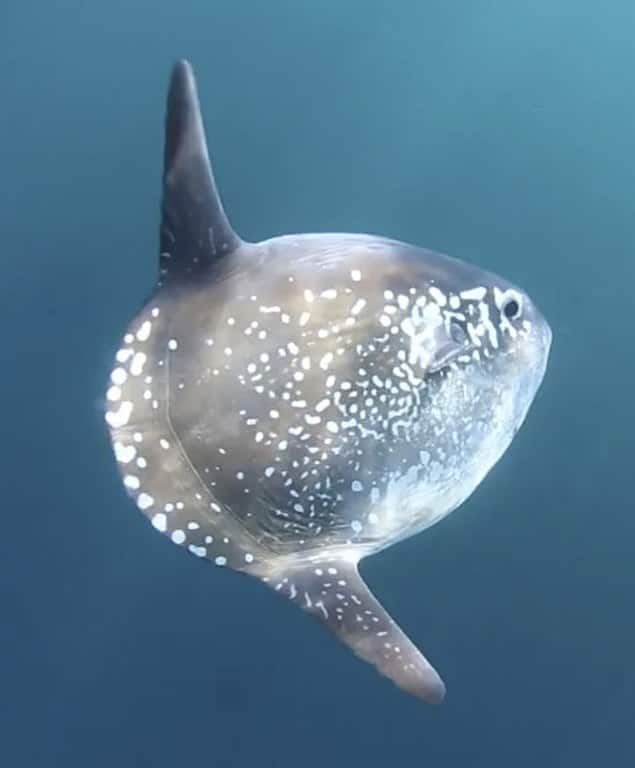
©Explorasub / CC BY-SA 4.0, via Wikimedia Commons - Original / License
The hoodwinker sunfish, often called sunfish, is the world’s 10th largest fish. This member has a flat elliptical shape. It can weigh up to 1.87 tons and be up to 7.9 feet long. Scientists working near New Zealand first reported it in 2014, but people have reported seeing it near Chile, South Africa, and Australia. This fish that often dives hundreds of feet to catch its meals was difficult for researchers to identify because it tends to live in the colder climates of Southern Hemisphere oceans where people usually do not go. This tailless fish has eluded researchers for years. That is one big fish in the ocean!
9. Sharptail Mola
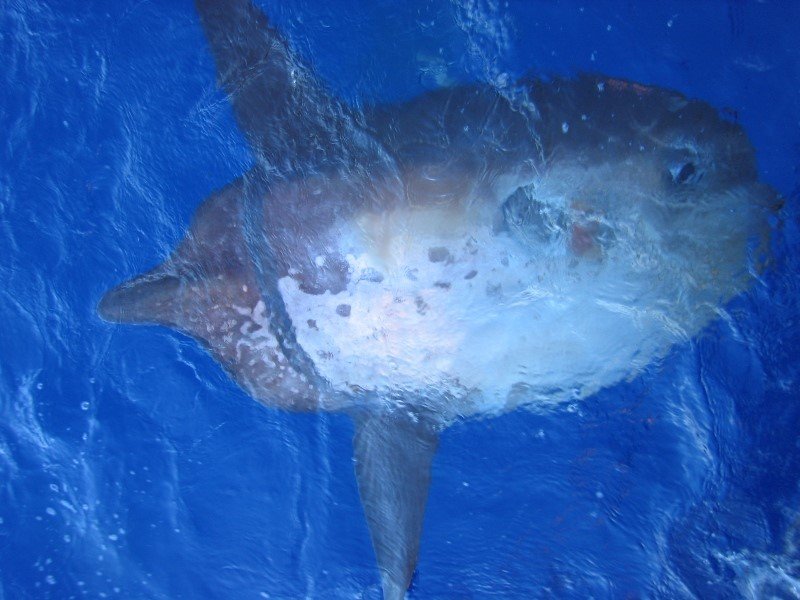
©NOAA/PIRO Observer Program, Public domain, via Wikimedia Commons - Original / License
Here is another big fish in the ocean: the very elusive sharptail molaweighs up to 2 tons, and it can be up to 9.8 feet long. This looks like an elliptical sunfish in many ways, but it has a tail that has a sword-like protrusion in its center. It usually lives in tropical and temperate waters. Scientists do not know much about its behavior or the many locations where it may live. Anglers have caught this fish in the Gulf of Mexico.
8. Beluga Sturgeon
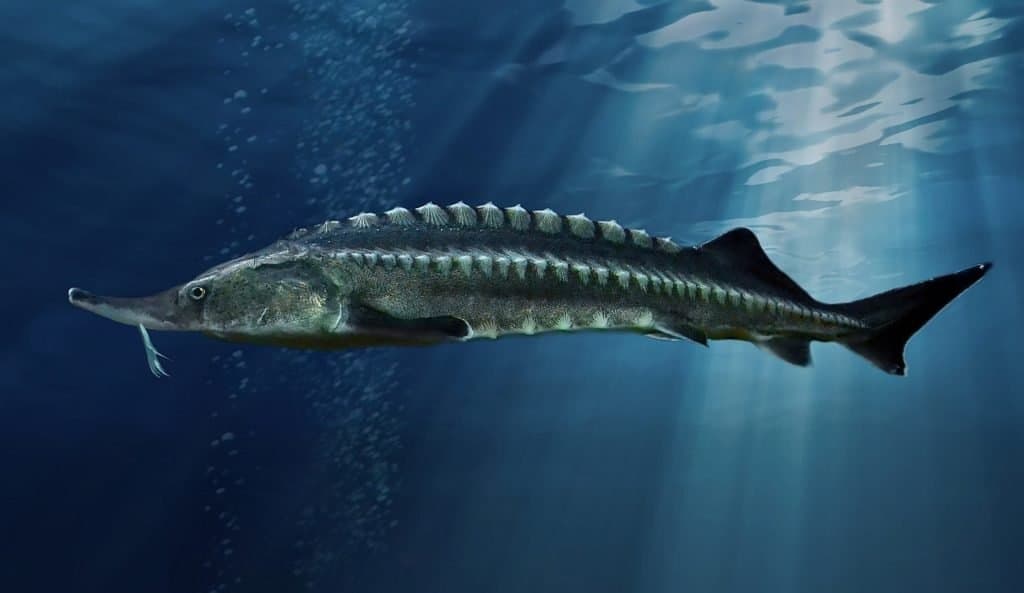
The beluga sturgeon, which is also called the great sturgeon, can weigh up to 2.072 tons and grow up to 24 feet long. That is a big fish in the ocean and one of the largest of these sturgeons are usually humpback. They all have long dorsal fins and shorter anal fins. This lives primarily in the Caspian and the Black Sea basins. Females are often targeted by commercial anglers because of the roe, beluga caviar, it produces.
7. Southern Sunfish
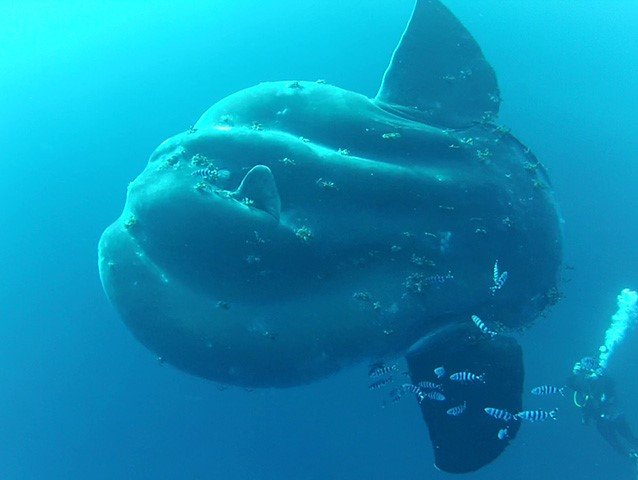
The southern sunfish, also called Ramsay’s sunfish, southern ocean sunfish, short sunfish, or bump-head sunfish. It can weigh up to 2.3 tons and be up to 11 feet long. They use their vast fins to move through the water while lying horizontally. While many of the fish on this list are highly elusive, it is not unusual to see these lying on their sides just under the water’s surface throughout the Southern Hemisphere’s oceans.
7. Southern Sunfish (Cont.)
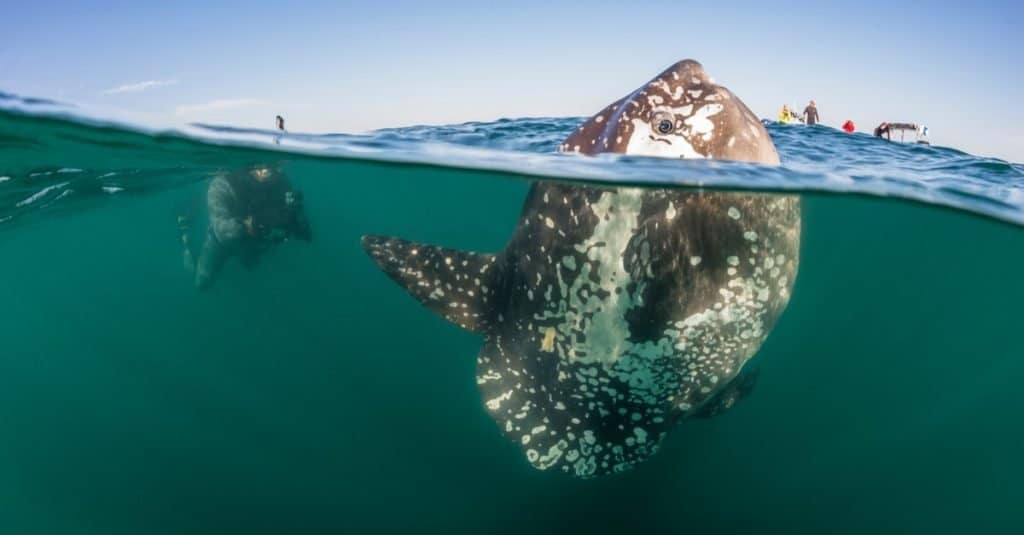
©wildestanimal/Shutterstock.com
Scientists believe that this fish that dives deeply in cold water to catch its prey does this to get warmer. Meanwhile, gulls eat the parasites found on them. They may also do this to increase the amount of oxygen in their bodies.
6. Ocean Sunfish
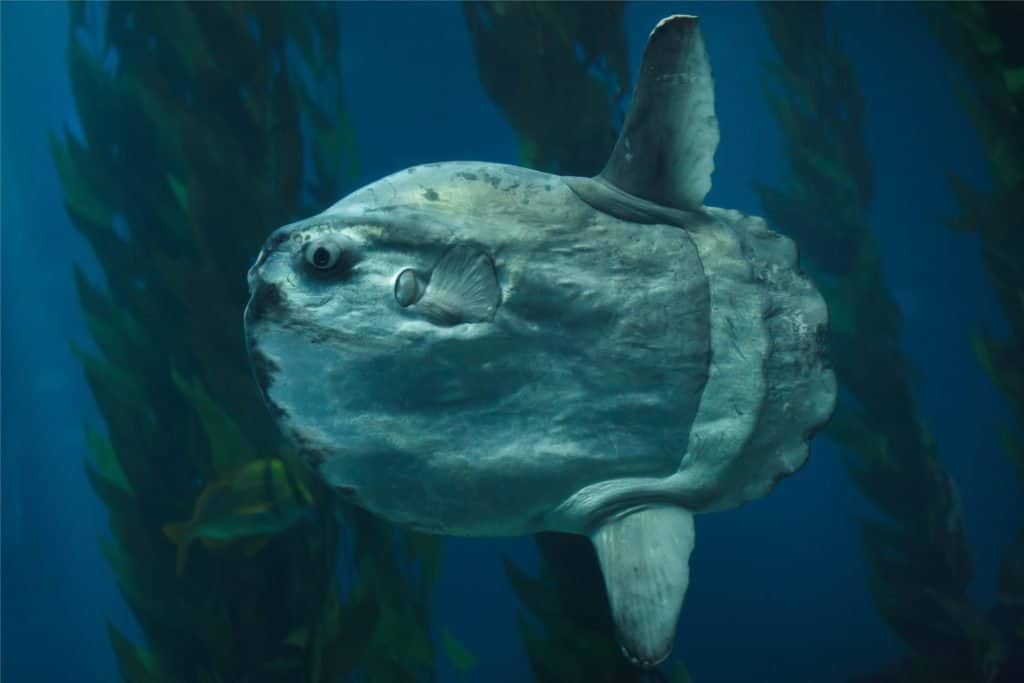
©Vladimir Wrangel/Shutterstock.com
Tied for number six on our list is the ocean sunfish, which is also called the common mola. This fish that lives in tropical and temperate waters globally has a fat head and a thin body that can extend up to 10 feet long. Females often produce 300 million eggs at one time, which is the most of any vertebrae. This docile fish is considered a delicacy in Taiwan and Japan. It often jumps out of the water, and that has caused some boating accidents because of its immense size.
5. Giant Oceanic Manta Ray
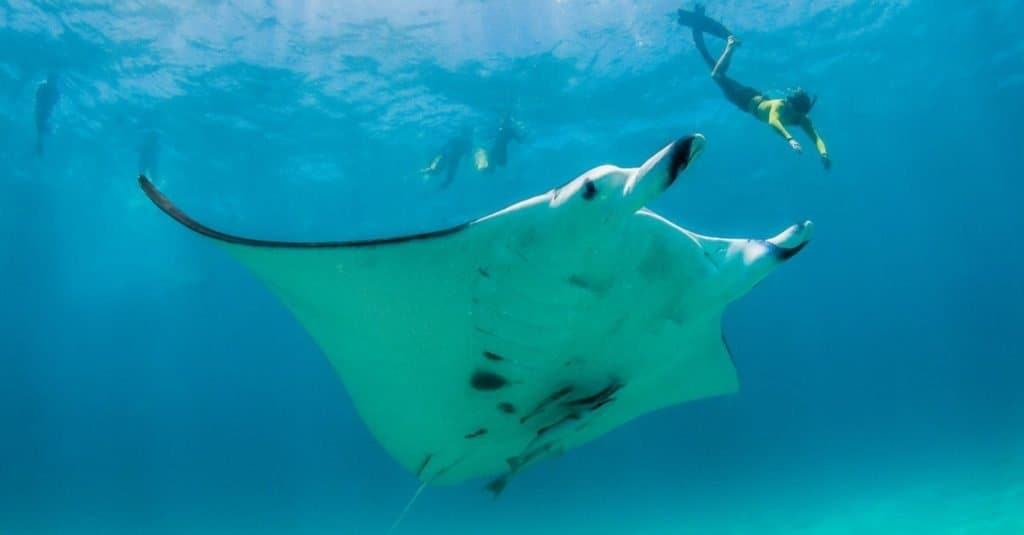
©Aaronejbull87/Shutterstock.com
Weighing in at 3 tons, the giant oceanic manta ray, also called the Atlantic manta ray, can grow up to 15 feet long. It can have a wingspan up to 30 feet wide. Most members of this species, which is the largest manta ray globally, live in tropical and subtropical waters. Researchers misclassified this species until 2017.
5. Giant Oceanic Manta Ray (Cont.)
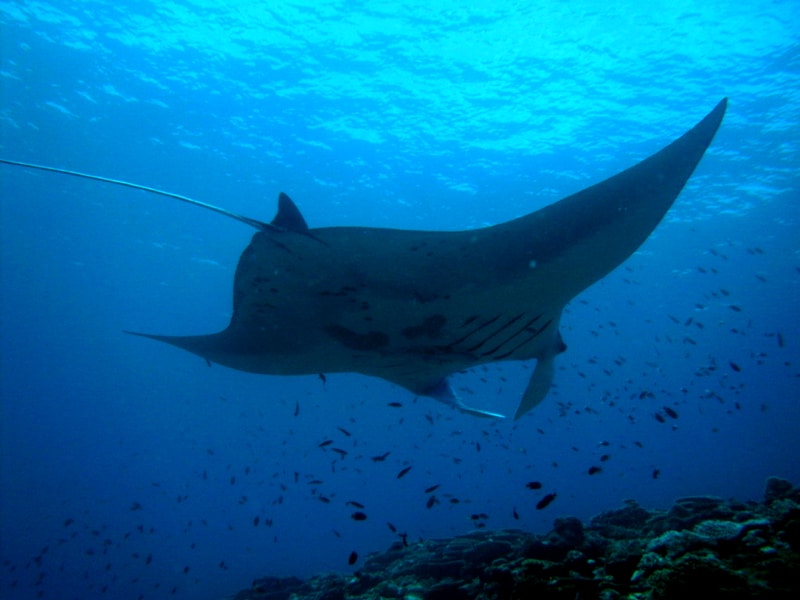
©Agsftw / Creative Commons - Original
These smooth-skinned disc-shaped fish have been found as far north as New Jersey and as far south as South Africa. If you see one near the shore, then it may be darting from one place to another, but they often swim many miles in a straight line in the open waters. Giant oceanic manta rays also boast record-breaking big brains. Namely, they have the largest brain-to-body ratio of any cold-blooded fish. As a result, it’s possible their intellect could be comparable to dolphins, primates, and elephants.
4. Tiger Shark

©Matt9122/Shutterstock.com
The tiger shark can weigh up to 3.11 tons and grow up to 24 feet long. This shark, which is the only member of the o genus, is usually found around Central Pacific islands, but people can spot it anywhere tropical or temperate water exists. Tiger sharks prefer to stay by themselves. The International Union for Conservation of Nature has this shark on its Nearly Threatened list because of overfishing.
4. Tiger Shark (Cont.)

©Tomas Kotouc/Shutterstock.com
Tiger sharks are very aggressive, and they finish second only to the white shark in the number of people they have killed. While many view this fish as a lazy swimmer, it is a big fish in the ocean that can reach incredible speeds when needed to catch its prey.
3. Great White Shark
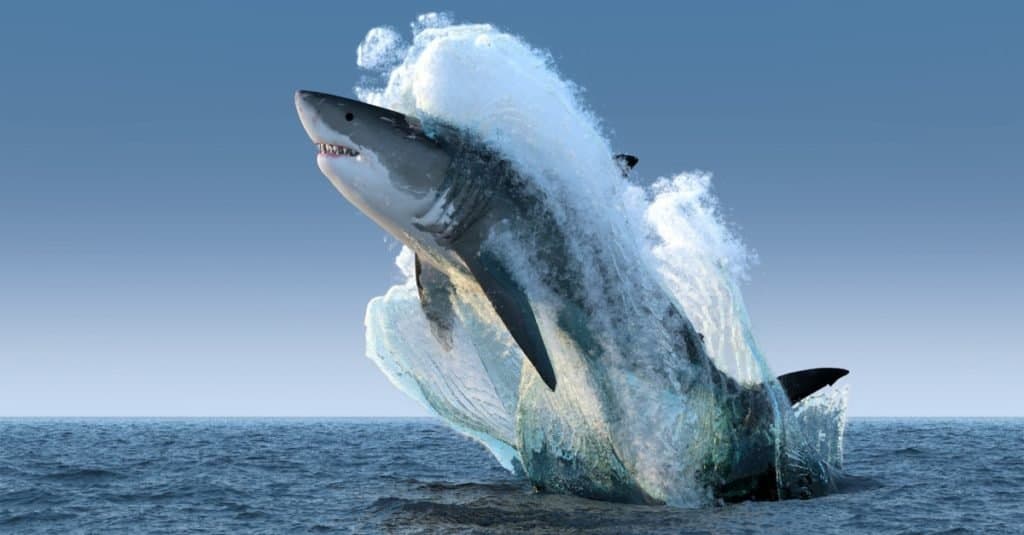
©Alexyz3d/Shutterstock.com
The great white shark, also called white shark or pointer shark, can reach 3.34 tons and be up to 23 feet long. These sharks can live to be 70 years old. Females usually do not calf until they are 33 years old.
3. Great White Shark (Cont.)

©Ramon Carretero/Shutterstock.com
These sharks can swim up to 16 miles per hour and reach depths up to 3,300 feet deep. The great white shark is aggressive, and it is known for more human attacks than any other fish. It is the only known member of the genus .
3. Great White Shark (Cont.)
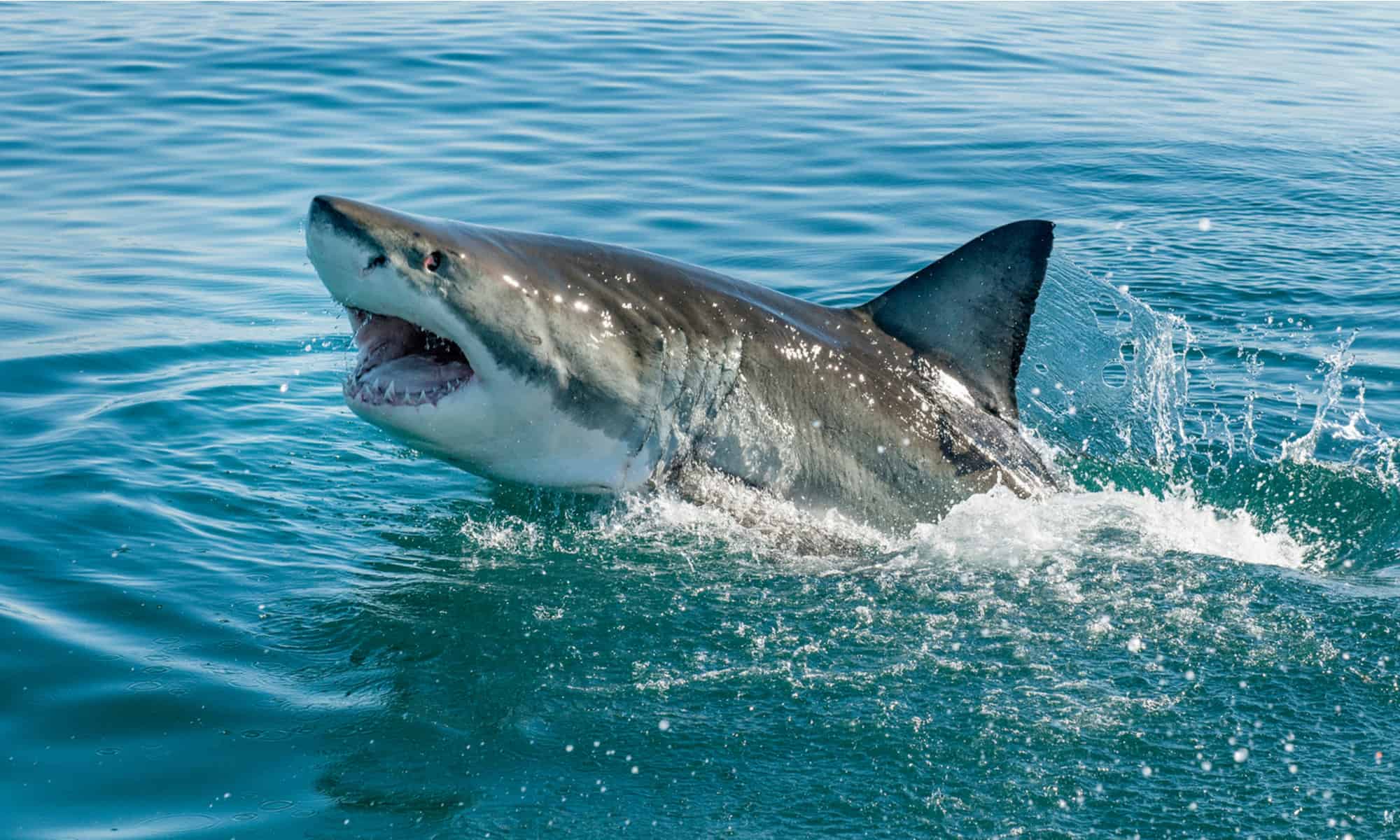
©Jayaprasanna T.L/Shutterstock.com
While this shark lives in many areas, one of the densest populated regions is around Dyer Island, South Africa. They can use the electromagnetic field to locate their prey. Some claim that a great white shark off Hawaii’s coastline that researchers have named Deep Blue is the largest ever. Still, the International Game Fish Association recognizes a great white shark measured in Australia in 1959 as the largest. Scientists have never measured Deep Blue, but the one in Australia weighed in at 2,663 pounds.
2. Basking Shark
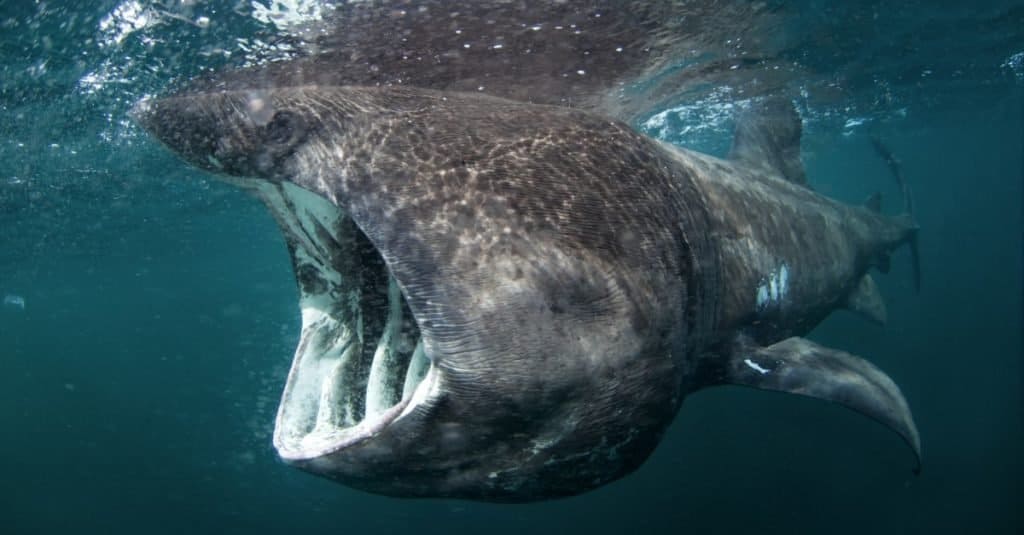
©Martin Prochazkacz/Shutterstock.com
The basking sharkis the second-largest fish in the world. It has weighed more than 4.2 tons and can be up to 40.3 feet long. It is one of three plankton-eating sharks in the world. This shark found in temperature waters globally takes its name because it appears to be basking in the water while feeding.
2. Basking Shark (Cont.)
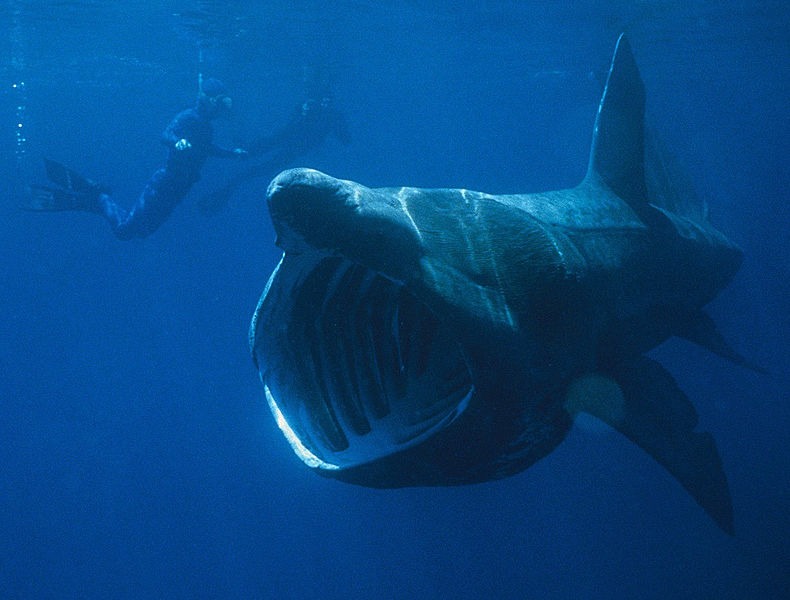
©Chris Gotschalk / Public Domain, from Wikimedia Commons, the free media repository - Original / License
Generally, these sharks prefer to live alone, although there are reports of them living in small groups. Sightings are common along the continental shelves, but tracking devices have allowed scientists to learn that they occasionally cross the equator. Scientists are not 100% sure, but they suggest that this shark can live to be about 50 years old. The largest basking shark ever scientifically measured weighed 8,598 pounds and was almost 30 feet long.
1. Whale Shark
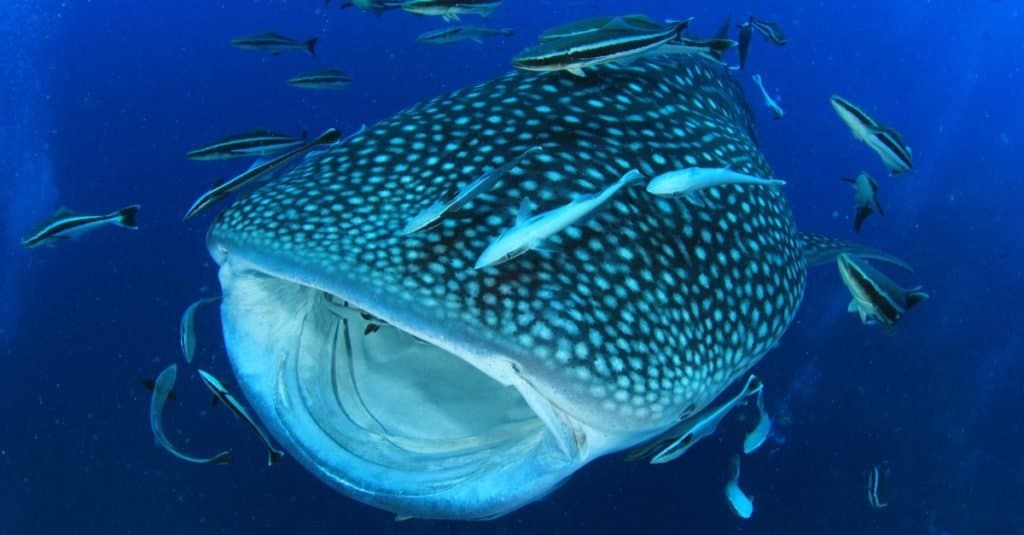
©Rich Carey/Shutterstock.com
The largest fish in the world is the whale shark. This species can weigh up to 21.5 tons and grow to be 41.5 feet long. In addition to being the largest fish, it is also the largest living nonmammalian vertebrate. This shark lives in tropical waters above 70 degrees Fahrenheit. It lives along coastlines and in the open water. This shark is a filter feeder. While it often spends much of its life alone, there are numerous reports of up to 400 individuals gathering near many locations, including off the Yucatan Coast.
1. Whale Shark (Cont.)
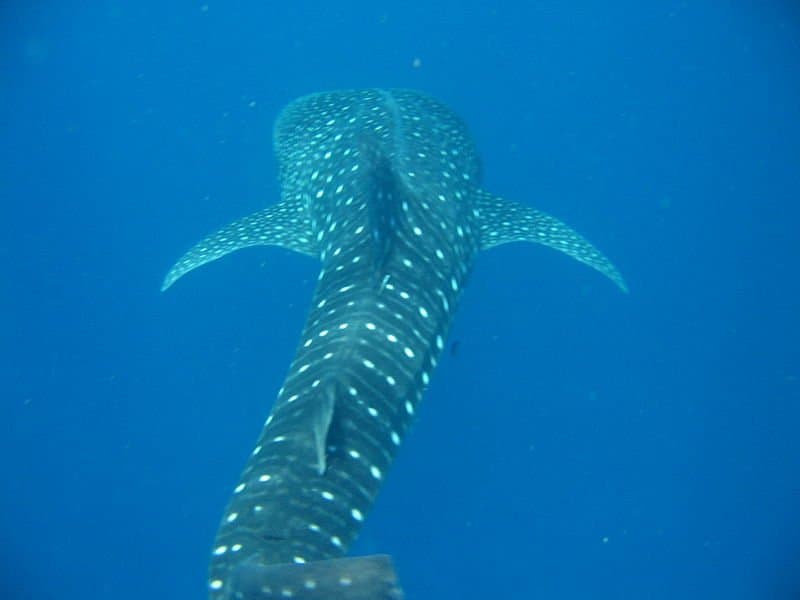
©Dapaan / Creative Commons - Original
The largest whale shark that was scientifically measured weighed 47,000 pounds. It was 41.5 feet long. It was caught near Pakistan on November 11, 1949. These fish are the largest in the world. Yet, each of these biggest fish has its unique characteristics.
1. Whale Shark (Cont.)
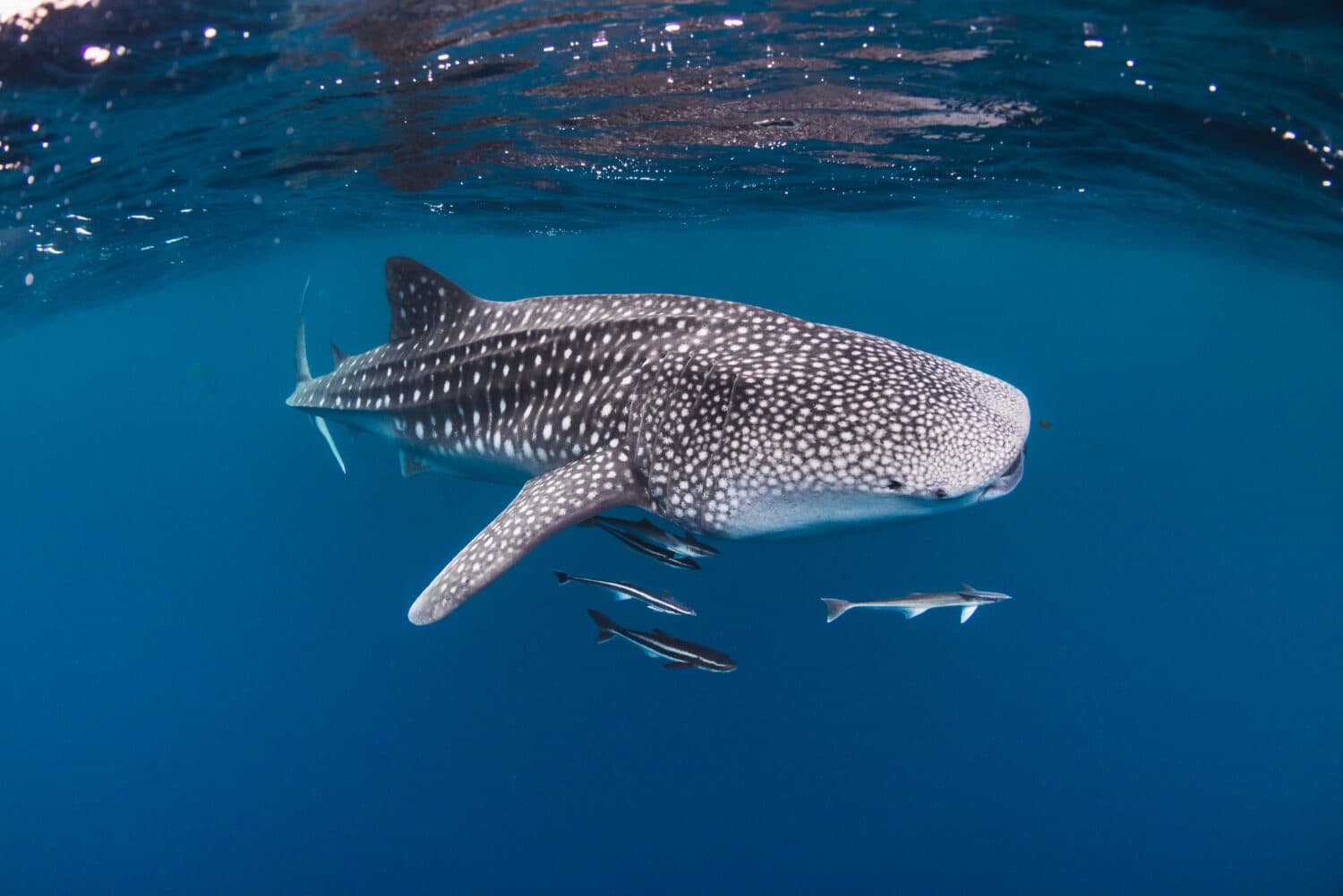
©Aaronejbull87/Shutterstock.com
The more that you learn about the biggest fish, the more you realize that the world is an amazing place.
The post The Most Massive Fish Swimming in the Ocean Today appeared first on A-Z Animals.
November 16, 2025 at 07:32PMChristian Drerup
.jpeg)
.jpeg)

0 Comments